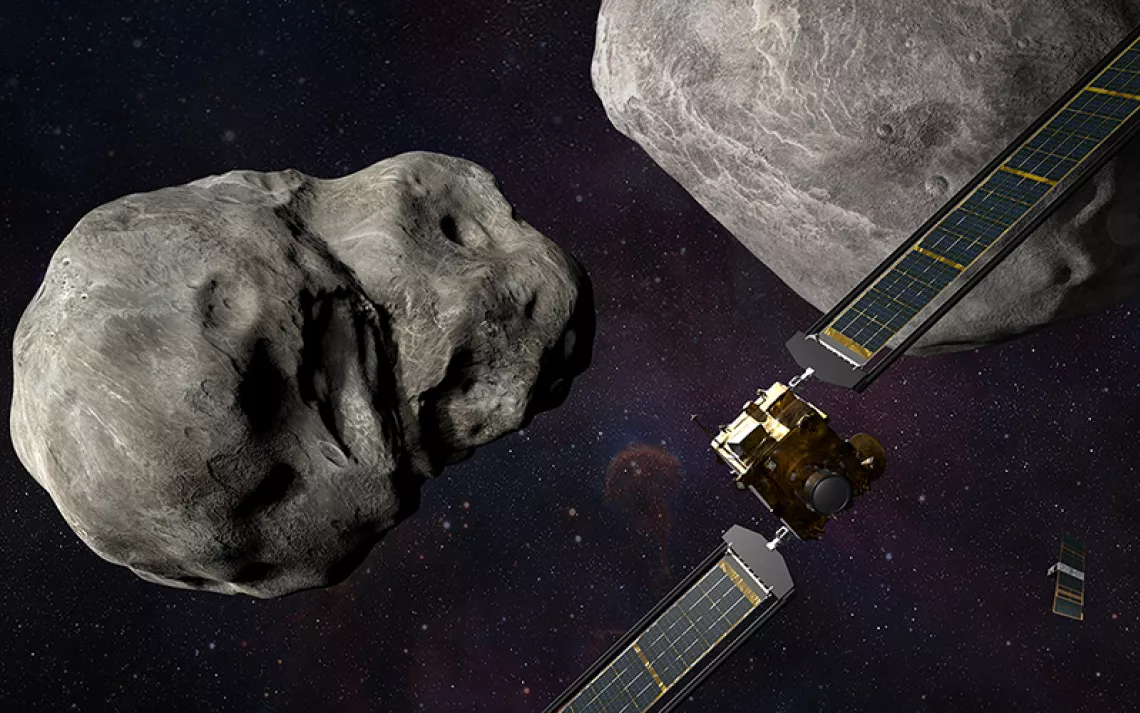March Observing Highlights: A Star Disappears
Your days are about to get longer—in a good way

The moon half-lit | Photo by nzastrophotography/istock
If you’ve never seen a bright star wink out as it disappears behind the moon, now is your chance. On March 4, Aldebaran, the brightest star in the constellation Taurus and the 14th brightest star in the sky, will be occulted by the moon in the evening hours. Find the nearly half-lit moon and the bright star close by and watch as Aldebaran disappears behind the unlit side of the moon. It will remain hidden from view for a while before reemerging on the lit side.
The start, length, and end of the occultation, plus the exact point behind the moon where the star disappears, will differ depending on your location. Those in southern Florida, for example, will see the star disappear around 11 P.M. for an hour while observers in San Francisco will see the occultation start around 7 P.M. and last for about an hour and 15 minutes.
This is a great time to examine the moon through binoculars or a telescope—pay close attention to the terminator, or the line that separates day from night on the moon, where craters and mountains appear in stark relief.
The Equinox and Daylight Saving Time
Daylight Saving Time begins on Sunday, March 12. The evenings have already been getting lighter, and setting our clocks ahead an hour will make them more so. With the combination of the equinox and Daylight Saving Time, we’ll see a big swing from darkness to light throughout the month. For example, in Minneapolis, Minnesota, the sunset on March 1 is at 6:00 P.M. and on March 31, it’s at 7:39 P.M. The vernal equinox occurs on March 20 at 5:29 A.M. CDT, heralding the first day of spring.
The Moon and Planets
Full Moon coincides with Daylight Saving Time this year. The moon will be 100 percent lit on March 12 in the morning. It will still be more than 99 percent lit as it rises that evening in the constellation Virgo.
Besides meeting up with Aldebaran this month, the moon will make its regular journey past the planets. On March 1, the moon is even with reddish Mars, but brilliant Venus below will steal the view. On March 14, the moon and Jupiter rise close together, with the star Spica joining the duo.
Saturn and the moon are close together on March 20, but you’ll have to be up early to see them. Venus sinks with the sun by the end of March, swapping places with Mercury, which is rising from the horizon. On March 19, Venus and Mercury pass each other as they head in opposite directions. On March 29, you can spot a young crescent moon to the left of Mercury with Mars above. On March 30, the moon again pulls even with Mars, finishing its monthly loop.
 The Magazine of The Sierra Club
The Magazine of The Sierra Club



